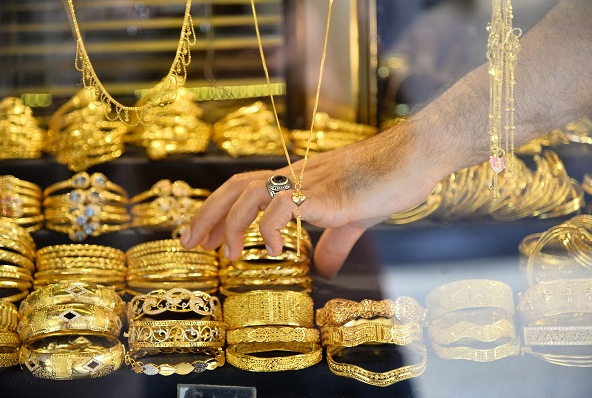London, Apr 20: Some groups protesting against atrocities in India during Prime Minister Narendra Modi's visit here turned violent after a tricolour was torn down from one of the official flagpoles set up for all 53 Commonwealth countries.
Modi, who is in the UK for bilateral talks and the multilateral Commonwealth Heads of Government Meeting (CHOGM), was greeted by protesters as he met his British counterpart Theresa May on Wednesday.
Some of the protesters at Parliament Square turned aggressive after the Indian tricolour was torn down from the flagpole.
"Police are investigating after an Indian flag in Parliament Square was pulled down at 1500 (UK time) on Wednesday, 18 April. The flag has been replaced. There have been no arrests. Enquiries continue," a Metropolitan Police statement said.
The Ministry of External Affairs (MEA) said the matter was taken up with the British authorities, who expressed their regrets and immediately had the torn flag replced with a new one.
"We're deeply anguished with the incident involving our national flag. Matter was taken up strongly with the UK side. They have regretted the incident. The flag was immediately replaced. We expect legal action against the people who were involved in this," MEA spokesperson Raveesh Kuamr said at a press briefing on Thursday.
A UK Foreign and Commonwealth Office (FCO) spokesperson said, "While people have the right to hold peaceful protests, we are disappointed with the action taken by a small minority in Parliament Square and contacted High Commissioner Yashvardhan Kumar Sinha as soon as we were made aware.
"The visit to the UK by Prime Minister Modi has strengthened our relationship with India and we look forward to working even more closely together on a number of important areas."
A senior broadcast journalist from one of the leading Indian media channels covering the protests was caught in a violent scrum with some of the more aggressive pro-Khalistani protesters and Scotland Yard officers on duty had to step in to the rescue. The group is planning to file a complaint with the Metropolitan Police on the incident.
"We have expressed our concerns with the British authorities and they have apologised for the incident. We have been warning against some of these elements out to make trouble and they have assured us of action. The Indian flag has now been replaced," a senior Indian official associated with the PM's visit said.
The pro-Khalistani demonstrators from Sikh Federation UK and demonstrators from the so-called "Minorities Against Modi" group, led by Pakistani-origin peer Lord Ahmed, were among nearly 500 protesters who descended upon Parliament Square. These included groups led by some Kashmiri separatist groups and at one point, some of them had surrounded the Mahatma Gandhi statue at the square with their banners and flags.
Officials involved with the prime ministerial visit to the UK had said that protests and demonstrations are "part and parcel of any democratic society" as long as they remain peaceful. There are now concerns that some of the more aggressive elements hijacked the tone of the protests.
Earlier on Wednesday, flash mob of sari-clad women with dhols set the tone for the pro-Modi crowds opposite 10 Downing Street as the Indian PM arrived for his breakfast meeting with British Prime Minister Theresa May. They were joined by the Friends of India Society International (FISI) group, which spearheaded a crowd of Indian diaspora from across the UK waving banners such as "Chak De India" and "Jai Hind" outside Downing Street and nearby Parliament Square.
"We want to welcome the Indian PM to the UK and show him the diaspora support he enjoys," said one of the members of the gathering.
On the other side, the anti-Modi protesters from Caste Watch UK and South Asia Solidarity group waved banners such as 'Modi, you have blood on your hands' and 'Modi Not Welcome'.
"Hindu nationalism must be curtailed to avert India sliding towards wholesale dictatorship threatening democratic fabric, rule of law and the unity of India," a Caste Watch UK spokesperson said.
They were joined by other protestors carrying images the eight-year-old rape victim from Kathua in Jammu and Kashmir, and Gauri Lankesh, the Indian journalist who was shot at her doorstep last year.
The group also included representatives of several Indian women's groups in the UK, wearing white as part of their silent protest against "atrocities that are taking place in India".
"I am Hindustan, I am ashamed," read their placards alongside banners such as 'Beti Bachao' and 'Politics minus rape'.






Comments
The problem is BALATKARI JANWAR PATRY (BJP), Modi and Amit shah style of running the government on Hitler style has already filled the gandu rashtra people with poison in their brains to send Muslims out of India. This is the real problem. Gandus want their gandu rashtra at any cost now. Arab Muslims ruled India for 900 years and enriched the country with coffee, silk etc. Then British came and looted the country. Then these BJP and RSS are gifted with the divide and rule formula from British. They are now just following the same old formula to eat up whatever is left in the country. All this making hindu rashtra etc is a drama.
Add new comment